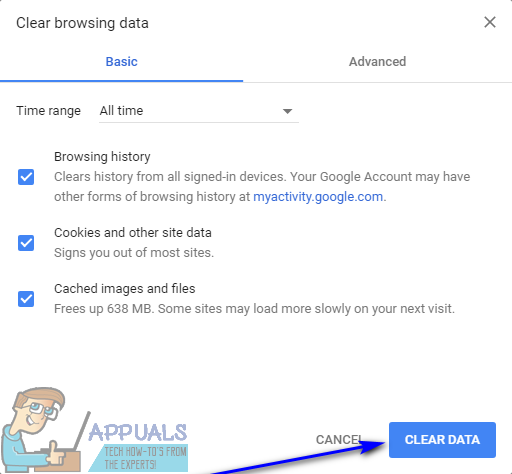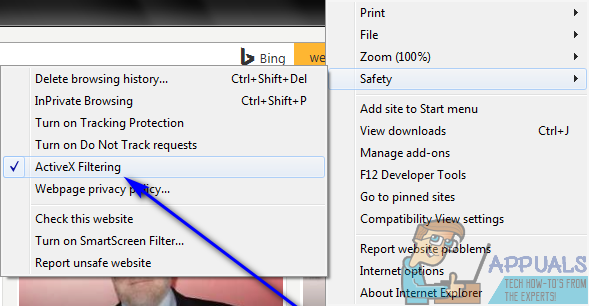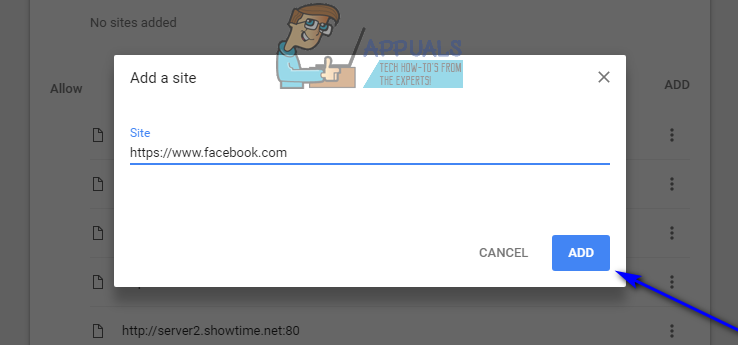Fix: Error loading player ‘no playable sources found’
If you try to play a video or audio file directly from a webpage while browsing the internet on an internet browser and your browser is, for some reason, unable to successfully play the file, you are going to see an error message that reads:
“Error loading player: No playable sources found”

This behavior is especially observed when the video or audio file the affected user tried to play before they ran into the error message utilized Adobe’s Flash Player in some capacity. Not being able to stream some or all audio and video files through your internet browser can be quite the pickle. Thankfully, though, all is not lost – there’s a lot you can do on your own to try and get rid of this error message and get the audio or video file to play successfully. The following are some of the absolute most effective solutions that you can use to try and fix this issue:
Reinstalling Adobe Flash Player
If there’s something wrong with the instance of Adobe Flash Player you have installed on your computer, there’s a chance you can resolve the problem by simply uninstalling and then reinstalling Adobe Flash Player. To uninstall and then reinstall Adobe Flash Player on your computer, you need to:
- Download the Uninstaller for Adobe Flash Player.
- Download and run the Adobe Flash Player uninstaller, and go through the onscreen instructions to uninstall Adobe Flash Player.
- Once Adobe Flash Player has been successfully uninstalled, click here, click on Install now and go through the installation process for Adobe Flash Player.
- When Adobe Flash Player has been successfully installed, restart your computer.
- Wait for your computer to boot up and check to see whether or not the problem has been resolved.
Updating your internet browser
Using an outdated version of your internet browser can also lead to you seeing the “Error loading player: No playable sources found” error message while trying to stream audio or video through your internet browser. If that’s the case, updating your browser to the latest available version should be enough to get the job done. Checking for updates for your internet browser is pretty easy – for example, if you’re using Google Chrome all you need to do is:
- Open Google Chrome.
- Click on the Menu button represented by three vertically-aligned dots.
- Hover over Help.
- Click on About Google Chrome.

- Chrome will check for updates, and prompt you to download and install any that it finds.
- If Chrome does find any updates, simply follow the onscreen instructions to download and install them. If your internet browser finds that no updates are available, simply try out a different solution to this issue.
Clearing your internet browser’s cache
Many users affected by this issue have been able to relieve their internet browsers of it by simply clearing out their internet browsers’ caches. Clearing out an internet browser’s cache is a pretty straightforward process – here’s what it looks like for Google Chrome users:
- Open Google Chrome.
- Click on the Menu button represented by three vertically-aligned dots.
- Hover over More tools.
- Click on Clear browsing data….
- Set the Time range to All time.
- Make sure that all three available options are checked and enabled.
- Click on Clear data.

- Restart Google Chrome and check to see whether or not the problem has been fixed.
Turn off ActiveX Filtering for all websites (For Internet Explorer users only)
Internet Explorer has this feature called ActiveX Filtering that comes enabled by default – this feature is designed to prevent websites from installing and using specific apps, and this sometimes includes Adobe Flash Player. If ActiveX Filtering is what is causing you to see this error message while trying to stream audio or video on Internet Explorer, you can disable the feature if you simply:
- Launch Internet Explorer.
- Click on the Tools button (represented by a fear).
- Hover over Safety.
- Locate the ActiveX Filtering option within the context menu. If there is a check next to the ActiveX Filtering option, it is enabled and functioning.
- If there is a check next to the ActiveX Filtering option, simply click on the option and the check will disappear, effectively disabling ActiveX Filtering.

- Restart Internet Explorer and check to see if the issue has been resolved.
Make sure that websites are allowed to run Flash (For Google Chrome users only)
- Launch Google Chrome.
- Type the following into Chrome’s address bar and press Enter:
chrome://settings/content/flash
- Locate the Allow sites to run Flash option.
- The Allow sites to run Flash option will have a toggle next to it – you need to make sure that it is toggled on. If this option is, for some reason, toggled off, simply click on the toggle to enable the option.

- Restart Chrome and check to see if you can now stream audio and video files off webpages without running into pesky error messages.
Set up Flash exceptions (For Google Chrome users only)
- Launch Google Chrome.
- Type the following into Chrome’s address bar and press Enter:
chrome://settings/content/flash
- Click on Add next to Allow.
- Type in the web address of the website that you were having trouble streaming audio or video files on in to the Site field.
- Click on Add.

- Restart Chrome.
- Check to see if you can now stream audio and video files from the website you just added a Flash exception for.
Note: If you are seeing the “Error loading player: No playable sources found” error message while trying to stream audio or video files on more than one website, you are going to have to repeat the steps listed and described above for each of those websites if this solution works for you.
Switch to a different internet browser
Almost all of the users affected by this problem are only affected by it on one specific internet browser. That being the case, if nothing else works for you, you can get rid of the “Error loading player: No playable sources found” error message and restore your ability to stream audio and video files from webpages by simply switching to a different internet browser. For example, if you’re experiencing this problem on Internet Explorer, simply switch to Google Chrome (which is a much better browser anyway!) or switch to Mozilla Firefox if you’re experiencing this issue on Google Chrome.
Launching in Incognito Mode
Another reason why you might be experiencing the ‘Error loading player‘ is because there are some third-party extensions in your browser which are conflicting with the player running process. These extensions are installed by the user themselves at some point.
In this solution, we will open the website URL in Incognito Mode. In this mode, all extensions and third-party plugins are disabled. If the video works in this mode, it means that there is some problem with your extensions and you can go ahead and disable them.
If the video starts after disabling them, consider turning them on one by one until you find the culprit. Remove that extension and restart your computer for changes to take effect.